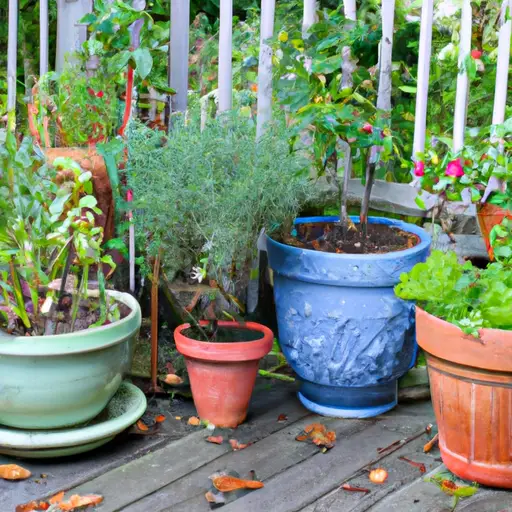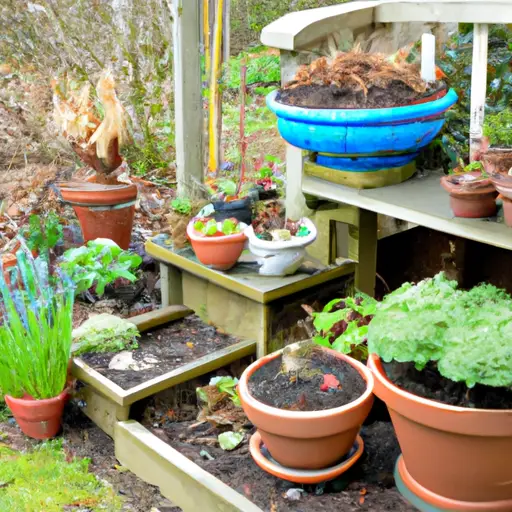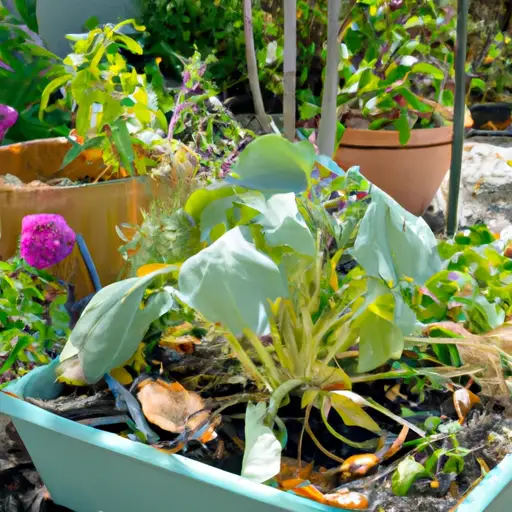Maintaining a Lush and Healthy Container Garden Year-Round
Container gardening is a popular choice for many individuals who want to bring some greenery into their lives, but lack the space or resources for a traditional garden. From small balconies to urban rooftops, container gardens provide endless possibilities for creating beautiful, lush spaces. However, maintaining a container garden year-round requires careful planning, attention to detail, and a little extra effort. In this article, we will explore the key elements of maintaining a lush and healthy container garden throughout the year.
1. Choosing the Right Containers
The foundation of a successful container garden starts with choosing the right containers. Opt for containers that are sturdy, durable, and have proper drainage holes to prevent waterlogged roots. The size of the pots should be appropriate for the plants you wish to grow; larger plants require bigger containers for their root systems to thrive.
Consider using lightweight pots made from materials such as fiberglass or plastic composite that are easier to move around when necessary. Additionally, ensure that your chosen containers complement your outdoor space aesthetically.
2. Selecting Appropriate Plants
To maintain a lush and healthy container garden year-round, it is crucial to select plants that can withstand different seasons and thrive in various conditions. Choose plants based on their sun requirements, water needs, and compatibility with each other.
For shade-loving plants such as ferns or begonias, place them in areas with limited sunlight or use taller plants as shade providers. Sun-loving plants like petunias or marigolds should be placed in spots that receive ample sunshine throughout the day. Incorporating evergreen plants or those with interesting textures can help maintain visual interest even during winter months.
3. Soil Preparation and Fertilization

The success of your container garden heavily relies on soil quality. Use high-quality potting soil enriched with organic matter such as compost or well-rotted manure to provide essential nutrients to your plants. Avoid using regular garden soil, as it tends to be too heavy and may not drain properly in containers.
Additionally, consider adding slow-release fertilizer pellets or organic fertilizers to keep your plants nourished. Follow the manufacturer’s instructions for proper dosage and application frequency. Remember to water thoroughly after fertilizing to avoid potential burns on the plant roots.
4. Proper Watering Techniques
Watering is one of the most critical aspects of maintaining a healthy container garden year-round. Different plants have different water requirements, so it is important to understand the needs of each species in your garden.
Check the moisture level of your pots regularly by sticking a finger into the soil or using a moisture meter. Water thoroughly when the top inch of soil feels dry, ensuring that excess water drains out through the holes at the bottom of the pots. Avoid overwatering, as it can lead to root rot and other fungal diseases.
During hot summer months, containers may dry out quickly, requiring more frequent watering. Consider investing in self-watering containers or installing drip irrigation systems for added convenience and efficiency.
5. Pruning and Deadheading
Regular pruning and deadheading are essential for maintaining a neat and healthy container garden year-round. Prune back any dead or damaged foliage to encourage new growth and prevent disease spread.
Deadheading refers to removing spent flowers from plants. This process encourages continuous blooming by redirecting energy towards new growth rather than seed production. It also helps maintain overall aesthetic appeal by preventing plants from becoming leggy or messy.

6. Pest Control and Disease Prevention
Container gardens are not immune to pests and diseases, so it is crucial to monitor your plants regularly for any signs of trouble. Inspect leaves for discoloration, chew marks, or signs of infestations such as webs or visible insects.
Prevention is key when it comes to pest control in container gardens. Use natural remedies like neem oil or insecticidal soap to address small-scale infestations. Introduce beneficial insects, such as ladybugs or lacewings, which can help control pest populations naturally.
7. Seasonal Transitions
Transitioning your container garden from one season to another requires some planning and forethought. As the weather changes, consider swapping out summer annuals for fall-loving plants like chrysanthemums or ornamental cabbages.
Before winter arrives, prepare your containers for the colder months by insulating them or moving them to a more sheltered location. Protect plants that are not cold-hardy by covering them with frost blankets or bringing them indoors if possible.
As spring approaches, refresh your container garden by removing any dead foliage and introducing new plants that complement the season. Prune back any overgrown branches and repot plants that have outgrown their current containers.
In conclusion, maintaining a lush and healthy container garden year-round requires careful planning, regular maintenance, and attention to detail. By selecting the right containers, choosing appropriate plant species, providing proper soil nourishment and water requirements, pruning regularly, addressing pests and diseases promptly, and transitioning with the seasons, you can enjoy a vibrant container garden all year long. Remember that gardening is a continuous learning process, so don’t be afraid to experiment and adapt your techniques as you go along. Happy gardening!














